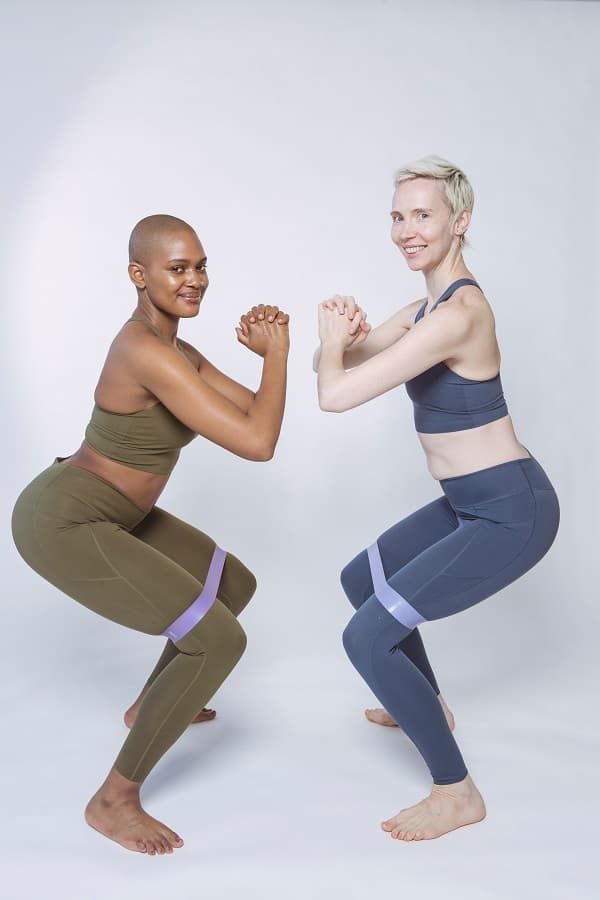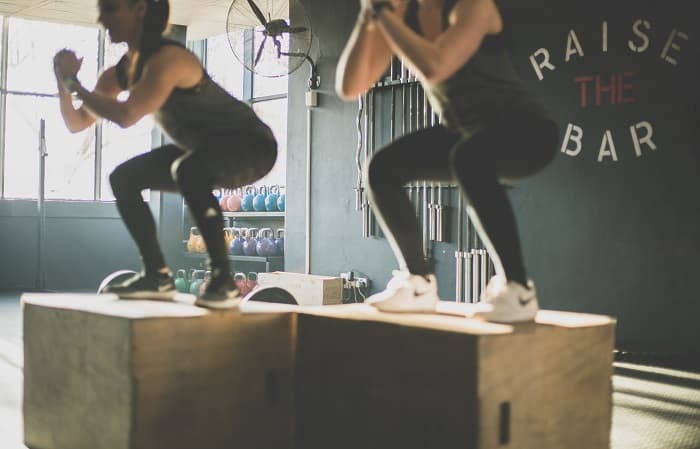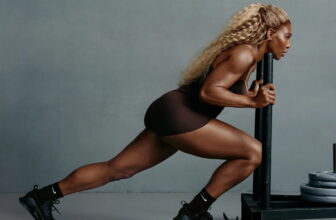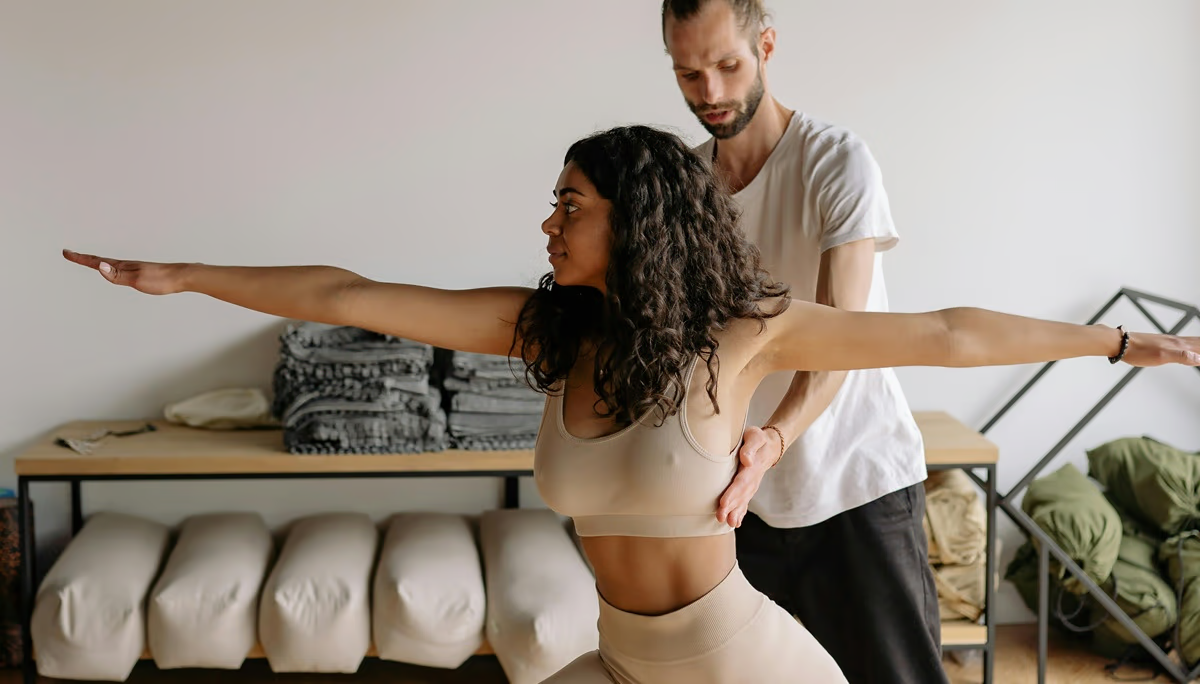Ultimate Guide to Achieving a Bigger and Stronger Butt Through Targeted Exercises
Many people desire a bigger and stronger butt, but achieving this goal requires more than just wishful thinking. It requires targeted exercises that specifically focus on the gluteal muscles. These exercises not only help to build muscle, but also improve overall strength, stability, and posture.
In this ultimate guide, we will explore the most effective exercises to achieve a bigger and stronger butt, as well as tips for proper form and progression. Whether you’re a fitness enthusiast or just starting out, this guide will provide you with the tools and knowledge to reach your booty goals.
Understanding the importance of targeted exercises for a bigger and stronger butt
Getting started: The key exercises for targeting the glutes
1. Squats:
 Photo: Pexels/Angela Roma
Photo: Pexels/Angela Roma 2. Hip Thrusts:
3. Lunges:
4. Glute Bridges:
5. Step-Ups:
Advanced techniques: Taking your butt workouts to the next level
To truly take your butt workouts to the next level, it’s important to incorporate advanced techniques that challenge your muscles in new ways. The key is to continuously push yourself and progress your workouts to achieve maximum results. In this section, we will discuss several advanced techniques that can help you elevate your butt workouts and achieve your fitness goals.
Firstly, consider incorporating weighted exercises into your routine. This can involve using dumbbells, barbells, or kettlebells to add resistance to your movements. For example, you can perform weighted squats, lunges, or deadlifts to target your glute muscles with added intensity. As you become more comfortable, gradually increase the weight to continue challenging your muscles.
Another technique to consider is incorporating plyometric exercises into your routine. Plyometric exercises, also known as jump training, involve explosive movements that engage your fast-twitch muscle fibers. This can include exercises such as jump squats, box jumps, or jump lunges. These exercises not only work your glutes but also improve your power and explosiveness.
 Photo: Meghan Holmes/Unsplash
Photo: Meghan Holmes/Unsplash Additionally, adding resistance bands to your workouts can provide an extra level of difficulty. Resistance bands can be used in various exercises such as glute bridges, lateral walks, or kickbacks. The bands create constant tension, activating your glute muscles throughout the entire range of motion. You can choose bands with different levels of resistance to progressively challenge yourself.
Furthermore, implementing unilateral exercises can help target each side of your glutes individually, ensuring balanced development. Examples of unilateral exercises include single-leg squats, Bulgarian split squats, or single-leg hip thrusts. These exercises require additional stabilization and increase the demand on your glute muscles.
Lastly, don’t underestimate the importance of proper form and technique. As you progress to advanced exercises, it becomes crucial to prioritize quality over quantity. Maintaining proper form ensures that you are effectively targeting your glute muscles while minimizing the risk of injury. If necessary, seek guidance from a certified fitness professional to ensure you are performing exercises correctly.
In conclusion, incorporating advanced techniques into your butt workouts can help you achieve the best results possible. Whether it’s through weighted exercises, plyometrics, resistance bands, unilateral movements, or focusing on form, continuously challenging yourself will lead to increased strength, muscle growth, and overall improvements in your glute area. Remember to listen to your body, gradually progress, and stay consistent in your workouts to see the desired outcomes.
Common mistakes to avoid when working towards a bigger butt
When it comes to working towards a larger butt, there are certain mistakes that you should avoid in order to see the best results. While everyone’s body is different, incorporating these tips into your fitness routine can help you avoid common pitfalls and maximize your efforts.
One common mistake to avoid is solely focusing on exercises that target your glutes. While squats and lunges are great for building glute strength and size, it is important to develop a well-rounded lower-body workout routine. This means incorporating exercises that target your hips, thighs, and hamstrings as well. By doing so, you can create a more balanced and proportionate figure.
Another mistake to avoid is not challenging yourself enough during your workouts. In order to see progress, it is important to consistently increase the intensity of your workouts over time. This can be done by increasing the weight, repetitions, or sets of your exercises. By continually challenging your muscles, you can stimulate growth and see better results in your quest for a bigger bum.
Additionally, not paying attention to your diet can hinder your progress. Building a bigger butt requires adequate nutrition to support muscle growth. It is important to consume enough protein to repair and build muscle tissue. Incorporating lean protein sources such as chicken, fish, tofu, and legumes into your diet can help support your goals. More so, ensure that you are getting enough calories to fuel your workouts and promote muscle growth.
Lastly, neglecting proper rest and recovery can impede your progress. Your muscles need time to repair and grow, and overworking them can lead to injury or hinder your progress. Be sure to include rest days in your routine and prioritize sleep to allow your body to recover properly.
By avoiding these common mistakes and incorporating a well-rounded approach to your workouts, you can work towards a larger bum effectively and safely. Remember to consult with a fitness professional if you have any concerns or specific goals, as they can provide personalized guidance tailored to your individual needs.
Staying motivated and tracking your progress
Achieving a bigger and stronger butt through targeted exercises requires dedication and consistency. It’s important to stay motivated and track your progress throughout your fitness journey. By doing so, you can stay accountable to your goals and make adjustments as needed.
To stay motivated, it’s helpful to set realistic and achievable goals. Start by determining what you want to achieve in terms of size and strength, and then break that goal down into smaller milestones. Celebrate your progress along the way, whether it’s being able to lift heavier weights or noticing increased muscle definition.
Another way to stay motivated is by finding a workout routine that you enjoy. Incorporate exercises that specifically target your glutes, such as squats, lunges, hip thrusts, and deadlifts. Vary your routine to keep things interesting and prevent boredom.
Tracking your progress is essential in determining whether your efforts are paying off. Keep a workout journal or use a fitness tracking app to record your exercises, weights, and repetitions. Take measurements of your butt and track any changes over time. Progress photos can also be a valuable tool to visually see how your body is transforming.
Additionally, consider tracking other aspects of your fitness journey, such as your nutrition and overall strength. Keeping track of your meals and ensuring you are consuming enough protein can support muscle growth. Regular strength assessments, such as testing your one-rep maximum for key exercises, can provide valuable insights into your progress.
Remember, achieving a bigger and stronger butt takes time and consistent effort. Stay motivated by setting goals, enjoying your workouts, and tracking your progress. With dedication and perseverance, you can achieve the results you desire.






